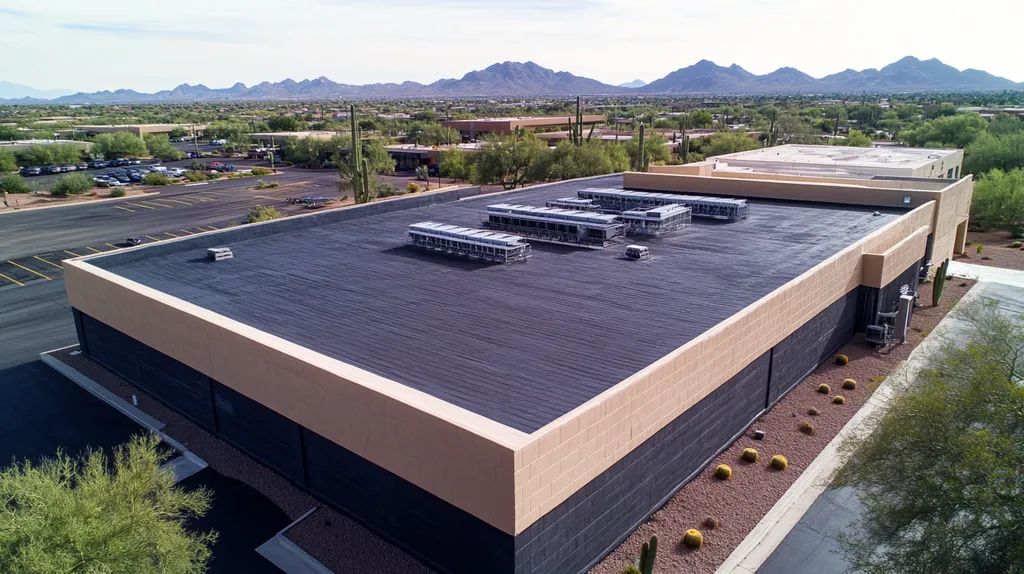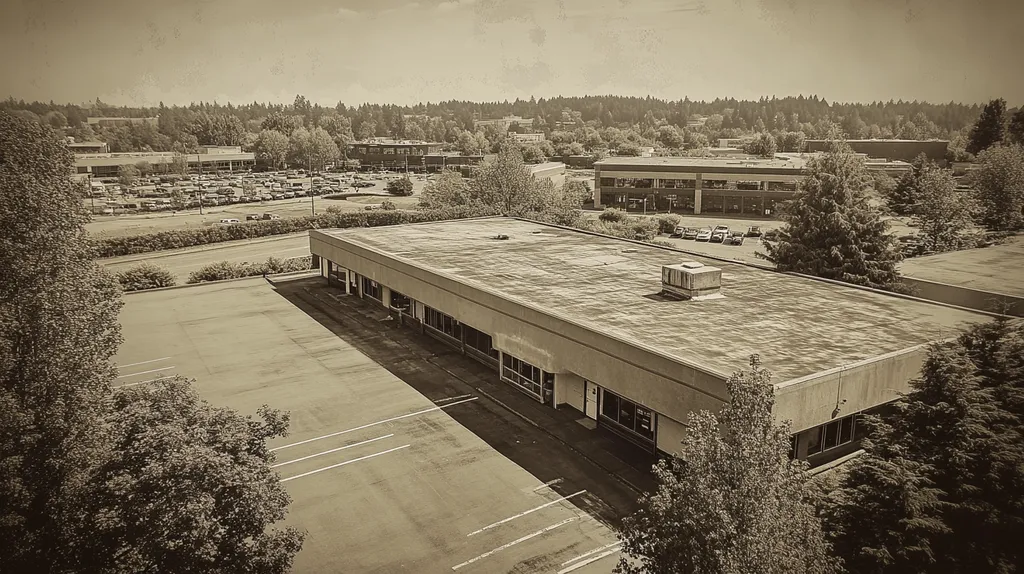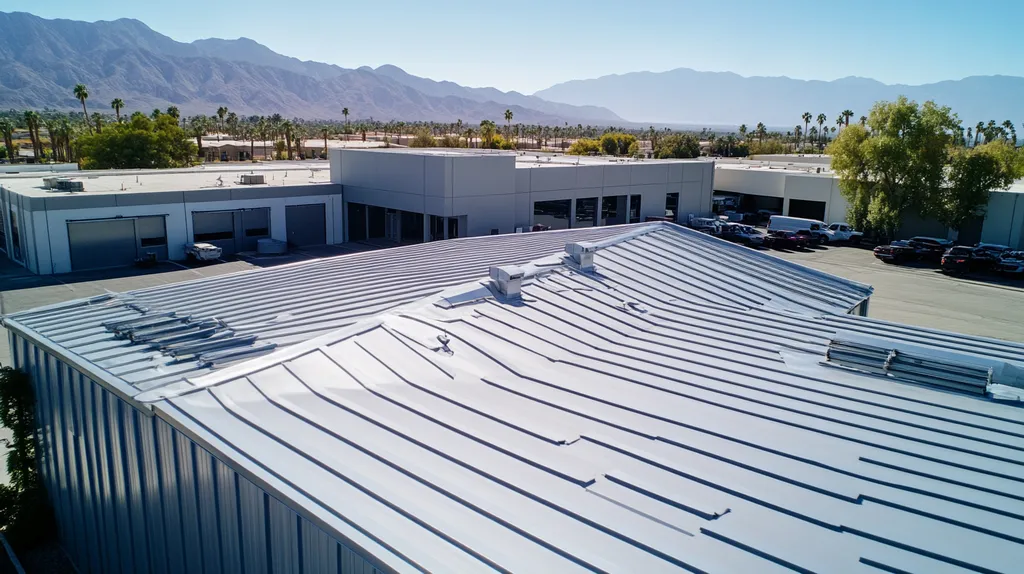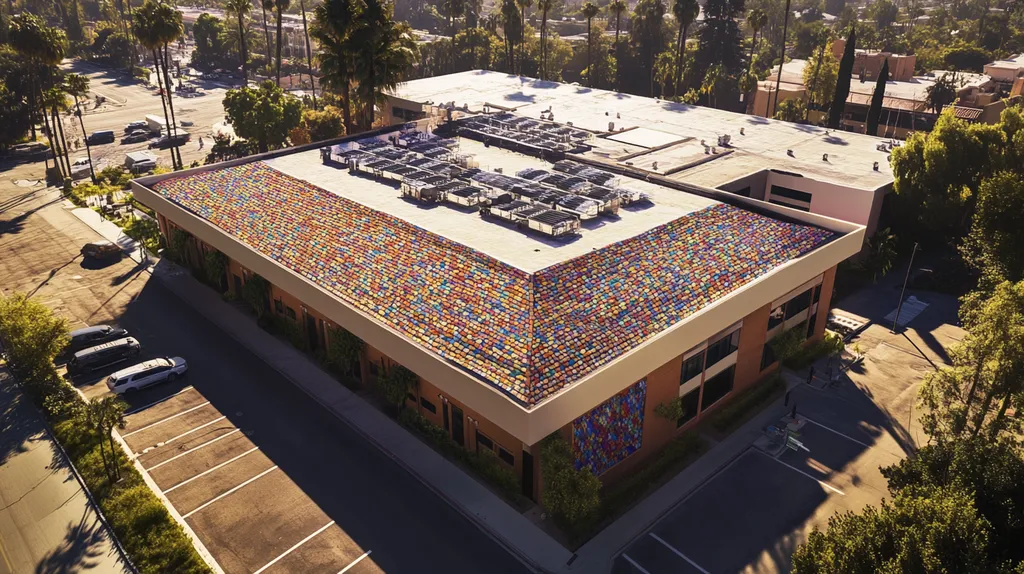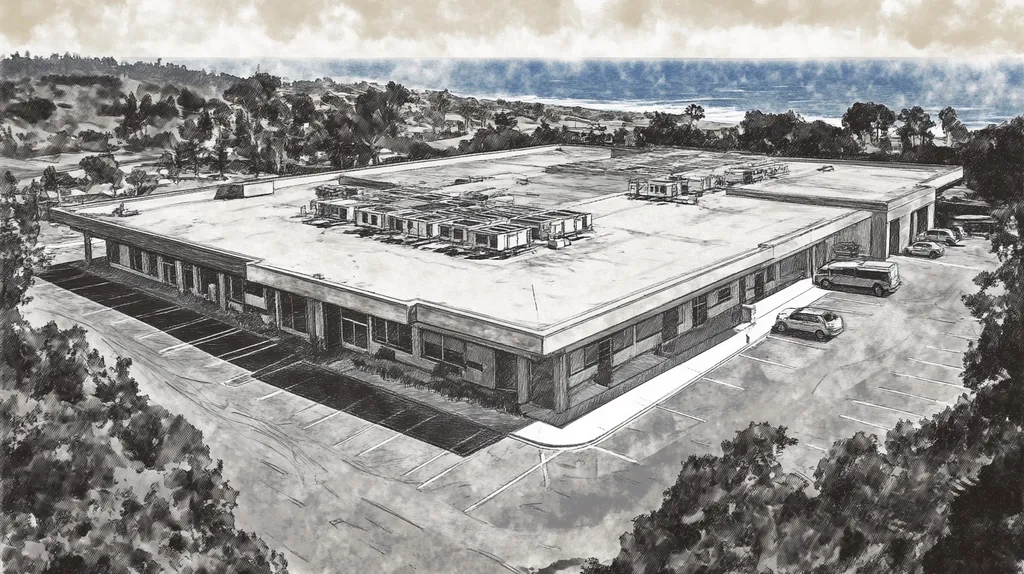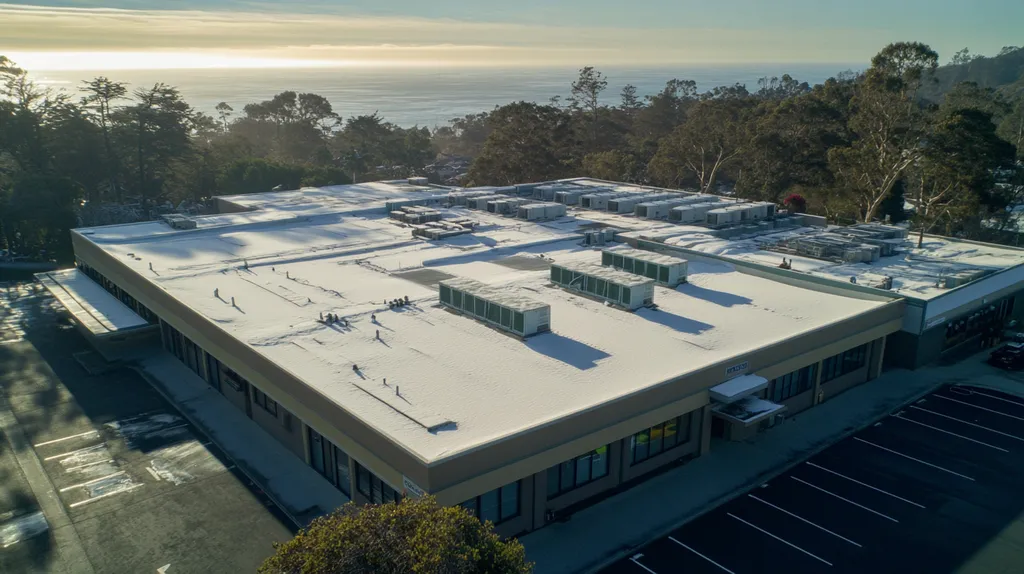When industrial roofs ignite, the consequences can be catastrophic. The National Fire Protection Association reports that roof-related fires cause over $1 billion in damages annually, yet many facilities remain dangerously unprepared.
From volatile chemicals to electrical hazards, industrial roofs face unique fire risks that demand specialized knowledge and vigilant management.
This guide breaks down the essential components of roof fire safety, equipping facility managers with practical strategies to identify hazards, implement preventive measures, and protect both assets and lives.
SECTION 1: THE BASICS EXPLAINED
Grasping the fire hazards on industrial roofs is essential for protecting valuable assets and ensuring safety. With the National Fire Protection Association reporting over 10,000 industrial fires each year, the risks are far too significant to ignore. Any fire incident can lead to devastating property loss, legal ramifications, and even injury or fatalities. This section aims to shed light on what these hazards entail, why they’re crucial for your facility’s safety, and how they operate.
What It Is (In Plain Language)
Fire hazards on industrial roofs encompass anything that can catch fire or facilitate its spread. Common culprits include certain types of insulation and roofing membranes that ignite with relative ease. Moreover, the accumulation of debris, ranging from leaves to dust, can create highly combustible conditions.
Mechanical systems and equipment such as exhaust fans or HVAC units, if not properly maintained, can also become ignition sources, sometimes igniting from overheating or sparks. Comprehending these elements allows property managers to pinpoint potential risks lurking above their heads.
Additionally, various chemicals used in industrial processes may inadvertently end up on the roof. These substances can pose a serious fire risk when combined with heat sources.
In short, identifying what constitutes a fire hazard is crucial in protecting industrial roofs and mitigating serious incidents.
Why It Matters (To Your Building)
Fire safety in industrial facilities isn’t just a checkmark on a compliance list; it directly impacts operational continuity and financial stability. A fire can lead to extensive building damage, compromised equipment, and inventory loss, all of which can swallow up funds in repairs and lost income. Businesses that neglect fire safety measures may find themselves facing significant insurance losses.
Moreover, failing to adhere to fire safety codes can lead to legal headaches, including hefty fines and soaring insurance premiums. Not to mention the threat of litigation from affected parties seeking compensation for negligence.
Lastly, the safety of every employee and visitor is paramount. Fires pose an immediate risk to lives, making effective fire hazard management essential to preventing tragic outcomes. Understanding these risks is vital for ensuring a safe working environment for all.
In summary, recognizing and addressing fire hazards is a fundamental aspect of safeguarding both assets and the well-being of everyone within the facility.
How It Works
Understanding the mechanics of fire hazards on industrial roofs involves various factors, notably material properties and environmental conditions. Different roofing systems come with fire-resistant ratings, which reveal how well they can withstand flames and heat.
The materials used in roofing dictate their fire vulnerability. For example, while some membranes are crafted from thermoplastics, others might be asphalt-based, each having unique levels of combustibility. Knowing these distinctions is key when selecting materials for areas prone to fire risks.
Environmental factors, such as weather conditions, can also intensify fire hazards. Dry, windy days, for instance, create ideal conditions for fires to ignite and spread rapidly. Routine inspections and diligent maintenance can go a long way in mitigating these risks.
Additionally, understanding how fire spreads within a roof structure can inform effective fire safety strategies. This includes identifying where fire-retardant barriers work best and pinpointing weaker areas that require enhanced protections.
Ultimately, grasping how fire hazards function is crucial for informed decision-making regarding roofing materials and the implementation of comprehensive fire safety plans.
SECTION 2: PRACTICAL APPLICATIONS
Understanding fire hazards for industrial roofs is not only essential but can also prevent catastrophic losses. With industrial fires causing over $1 billion in property damage annually, property owners face significant stakes. Industrial roofs are frequently exposed to flammable materials, extreme heat, and other dangerous elements. By identifying these hazards, property owners can enhance safety and protect their assets. This section dives into the various uses of industrial roofs, the critical times when fire hazards become pronounced, and how these roofs interact with other systems within the facility.
Common Uses & Examples
The versatility of industrial roofs means they serve multiple purposes, each introducing its own set of fire hazards. Consider manufacturing plants where roofs act as platforms for equipment installation, ventilation systems, or even additional storage. Any of these components can become potential ignition sources if not regularly maintained. Storing flammable materials or chemicals on or near the roof can also create conditions ripe for disaster.
Flat roofs, with their low slope, can collect standing water that may foster mold growth. This not only compromises roofing materials but also creates slippery surfaces, upping the risk of accidents during maintenance. By grasping these common uses, facility managers can anticipate and mitigate fire risks more effectively.
Hazardous materials often abound, including solvents, oils, and flammable adhesives. If improperly stored or allowed to leak, these substances can significantly heighten fire risks. Training staff and raising awareness about these hazards are essential for ensuring compliance with safety regulations and implementing robust fire prevention strategies.
Designing roofs with these applications in mind can lead to safer conditions for workers and protect the facility’s assets.
When You Need It Most
Fire hazards tend to escalate during specific circumstances, especially during scorching weather or peak operation periods. Elevated temperatures can dramatically increase the likelihood of ignition, particularly with volatile materials lurking nearby. It’s essential for facility managers to remain extra vigilant during these crucial times.
Seasonal shifts can also affect material properties, creating unexpected hazards. For instance, winter’s snow and ice may trap debris like flammable leaves. As warmer weather arrives, that seemingly innocuous debris can catch fire and pose significant risks to the roof structure.
Moreover, industrial sites often see heightened activity during peak periods, which can lead to accidents. For example, during busy production cycles, workers may expose electrical systems or flammable materials to added risks. Managers must implement proactive checks and safety measures during these high-pressure times.
Being aware of these critical periods allows for better planning of inspections and maintenance, greatly reducing the potential for damage or injury due to fire hazards.
Interactions With Other Systems
The functionality of a roof is closely intertwined with various systems within an industrial facility, and these interactions can either dampen or exacerbate fire hazards. HVAC systems, typically installed on rooftops, require diligent maintenance for both fire safety and energy efficiency. Neglecting these systems can lead to overheating or sparks, turning minor issues into major fire risks.
Drainage systems are equally crucial for fire prevention. Clogged drainage outlets can cause water to pool, leading to structural problems and risks associated with flammable materials floating atop stagnant water.
Moreover, fire suppression systems interact with roofing structures in ways that can either help or hinder safety. For example, roof-mounted sprinklers must be properly placed to function effectively in emergencies; otherwise, fire may spread unchecked. Regular evaluations of these systems alongside roof inspections are essential for optimal safety.
By recognizing how different systems interplay, facility managers can devise comprehensive fire safety strategies that tackle multiple fire hazards, ensuring the roof contributes positively to the facility’s overall safety.
SECTION 3: KEY TERMINOLOGY DECODED
Understanding fire hazards in industrial roofing isn’t just a luxury; it’s a necessity for managers and property owners alike. Grasping the related terminology is essential for effective risk management. Words like “fire-resistance rating,” “flammability,” and “thermal insulation” may sound technical, but they hold the key to your facility’s safety and compliance. This section will demystify these terms, empowering better decision-making and ultimately protecting your assets.
Essential Terms Explained
Fire-resistance rating is a crucial concept in roofing safety. It measures how long a roofing material can endure flames before giving way, typically quantified in hours. This rating is not just a number; it’s your ticket to compliance with building codes and a sturdy framework for overall safety.
Next on our vocabulary list is flammability. This term describes how quickly a material ignites and how fast flames spread. Grasping flammability ratings allows managers to select roofing materials that not only meet safety standards but also mitigate fire risks significantly.
Then we have thermal insulation, which plays a critical role in fire safety. A well-insulated roof acts like a shield, preventing heat from reaching flammable materials and thus reducing fire risk. Insulation effectiveness is often measured in R-values, helping you understand how well a material resists heat flow.
By becoming familiar with these essential terms, property managers can make informed choices that enhance safety and compliance while also optimizing their roofing investments.
Industry Jargon Translated
You may frequently encounter terms like “combustible” and “non-combustible” in industrial discussions. Simply put, combustible materials can catch fire and fuel a blaze, whereas non-combustible materials resist burning. Knowing this distinction is vital for selecting roofing products that align with fire safety standards.
The term “self-extinguishing” refers to materials that will cease burning when the ignition source is removed. This characteristic is invaluable for preventing fire from spreading across roofs, making it an appealing feature for roofing choices.
And let’s not forget “fire ladder access.” This represents designated pathways for firefighters to access the roof during emergencies. Ensuring proper access is critical for first responders, who must act swiftly and safely to mitigate fire situations.
By translating jargon into plain language, managers can confidently navigate compliance challenges and boost their fire safety measures.
Measurement & Units Simplified
Measurements are a linchpin in the framework of fire safety. For instance, the fire-resistance rating is quantified in hours, typically spanning from 1 to 4. Understanding how long roofing materials can withstand intense heat is indispensable for effective risk assessments.
Flammability ratings are usually expressed through the ASTM E84 test, which categorizes materials based on their flame spread performance. These ratings are your best friends when selecting roofing materials that comply with industry regulations.
Insulation effectiveness is represented by R-values. Higher R-values indicate better insulation, which not only improves energy efficiency but also serves as a fire safety buffer, reducing the likelihood of heat exposure to flammable components.
By familiarizing themselves with these measurement units, industrial managers can better assess the fire safety of their roofing options and sidestep potential hazards.
SECTION 4: DECISION FACTORS
The stakes for roofing decisions in industrial environments are alarmingly high. Fire hazards significantly threaten property and, more importantly, the safety of employees. The National Fire Protection Association reveals that a staggering 30% of all industrial property fires start with roofing systems. By understanding crucial factors like cost, performance, and durability, facility managers and property owners can make informed decisions that prioritize safety while securing long-term investments.
Cost Considerations
Cost is undeniably a top consideration when selecting a roofing system, but going for the lowest bid can be a dangerous misstep. While budget constraints often push managers toward cheaper materials, these can end up costing more due to frequent repairs and premature replacements. Spending a bit more on fire-resistant roofing material may seem steep initially, but it can lead to substantial savings in fire damage costs and lower insurance premiums.
Materials like metal or modified bitumen not only boast better fire ratings than traditional asphalt roofs but also lower the risk of flames spreading. This means greater protection for invaluable assets. Striking a balance between upfront costs and future savings is crucial when choosing roofing that involves fire hazard considerations.
A deep dive into maintenance costs is equally vital. Regular maintenance not only minimizes fire risks but also prolongs the life of the roofing system. Ignoring this can result in spiraling expenses and heightened vulnerability, turning managers into fire hazard firefighters rather than proactive overseers.
A thorough cost-benefit analysis is recommended for any facility contemplating new roofing. This should encompass installation expenses, expected longevity, maintenance requirements, and fire-related costs. By making these financial decisions wisely, managers can invest in safer roofing options without breaking the bank.
Performance Trade-offs
Performance strikes at the heart of the decision-making process when evaluating roofing solutions. While visual appeal may be tempting, the safety and functionality of materials must take precedence. Fire ratings can vary widely among seemingly similar products, dictating how roofs withstand flames.
For instance, newer synthetic roofing materials may boast attractive warranty terms and lower installation costs yet could fall short in fire resistance. Conversely, concrete tiles, though heavier and potentially pricier, offer superior fire protection. Recognizing these trade-offs is essential for aligning roofing choices with fire safety objectives.
The installation method also plays a critical role in fire performance; adhered systems often provide enhanced resistance compared to mechanically attached roofs, which may be more prone to damage and fire spread. Evaluating both installation techniques and material performance is crucial for meeting high safety standards.
Ultimately, performance decisions should be tailored to the facility’s specific needs. By conducting comprehensive assessments of material properties in relation to fire safety, facility managers can select roofing systems that ensure both structural integrity and robust defenses against fire hazards.
Lifespan & Durability Factors
Lifespan and durability are pivotal elements that directly influence fire safety when selecting roofing systems. While short-term options may be appealing, they often falter under environmental stresses, heightening fire hazards over time. Durable materials that can withstand extreme weather are less likely to degrade and create vulnerabilities, enhancing their fire resistance.
For instance, a well-maintained single-ply membrane can last up to 20 years, while cheaper alternatives might degrade in under a decade, leaving underlying structures exposed to fire risks much earlier. Managers must consider long-term advantages alongside initial expenditures to ensure their investments yield lasting safety.
It’s also essential to consider regional conditions when evaluating durability. Facilities in wildfire-prone areas should opt for roofing materials with enhanced flame resistance. This proactive strategy not only boosts safety but also mitigates potential damage from external threats.
Lastly, regular inspections and maintenance are vital for maintaining fire performance. A proactive maintenance program not only extends a roof’s lifespan but also ensures that its fire-resistant qualities remain intact. By focusing on durability in roofing selections, facility managers can significantly bolster fire safety within their industrial operations.
SECTION 5: COMMON CHALLENGES
Fire hazards on industrial roofs are more than just minor inconveniences; they represent serious threats to property and human safety. With the National Fire Protection Association indicating that industrial facilities play a prominent role in fire-related incidents, taking a proactive stance is essential. Recognizing the common challenges associated with fire safety can significantly reduce potential dangers. This section will delve into frequent problems encountered, telltale warning signs, and effective preventative strategies.
Frequent Problems & Solutions
Industrial roofs are often vulnerable to fire hazards, especially due to the presence of flammable materials stored or utilized on-site. Sparks from machinery or the careless disposal of combustible waste can quickly escalate into serious ignition sources, particularly in areas filled with chemicals or heavy machinery. To combat these risks, facility managers should routinely evaluate how materials are stored and the practices surrounding their use.
Neglecting roof maintenance can also intensify fire hazards. Debris—whether leaves, trash, or other materials—can ignite and cause flames to spread rapidly. Instituting regular inspections and cleaning routines is vital in minimizing this risk and verifying that roofing materials meet fire-rated requirements for the industry.
Another recurring challenge is the employment of non-fire-resistant roofing materials. Facility managers should strive for roofs constructed from fire-resistant options like metal or modified bitumen, which can endure higher temperatures. If retrofitting becomes necessary, selecting appropriate fire-rated systems is crucial for enhancing safety.
Moreover, improper electrical installations and faulty wiring pose significant risks, as they can emit sparks capable of igniting nearby combustible materials. Conducting regular electrical inspections and timely upgrades can tackle many of these hazards, ensuring adherence to safety regulations and codes.
Warning Signs To Watch For
Catching potential fire hazards early can avert minor issues from transforming into catastrophic incidents. One crucial warning sign to be alert for is unusual odors—burning plastic or rubber can often signal overheating electrical systems or nearby ignitable materials. Prompt investigation is essential to prevent a potentially dire situation.
Visible damage, like bubbling or blistering on roofing membranes, serves as another red flag for heat-related concerns. Such damage frequently indicates that a deeper problem exists, which—if ignored—could result in significant roof failure and increased fire risk.
The accumulation of ash or soot around heating elements or machinery may suggest that ignitable substances are in close proximity, raising the stakes for ignition. Regular monitoring can help identify these hazards before they escalate into larger problems.
Finally, an unexplained spike in energy bills can highlight malfunctioning electrical systems or inadequate insulation that heightens heat levels, creating favorable conditions for fire outbreaks. Addressing these irregularities swiftly can vastly improve fire safety.
Preventative Approaches
A robust fire safety plan is the foundation of averting potential hazards. This entails training employees in fire safety protocols and emergency procedures, as educated staff can respond effectively in times of danger. Regular fire drills are essential for keeping emergency preparedness top of mind.
Establishing a solid maintenance schedule is equally vital. Routine inspections of roofing materials, electrical systems, and storage practices must be enforced, allowing for early detection and rectification of fire hazards. This proactive strategy enhances the safety of both personnel and the facility.
Proper labeling of hazardous materials and clear storage methods can dramatically decrease risks. Adopting fire-retardant materials and maintaining designated fire lanes throughout the facility prevents ignitable sources from interacting with flammable options.
Lastly, collaborating with professional roofing contractors ensures the use of the latest fire-rated materials and technologies. These experts provide tailored solutions that address specific industry needs, boosting overall fire preparedness and response capabilities.
SECTION 6: NEXT STEPS & RESOURCES
Fire safety on industrial roofs isn’t just a precaution; it’s an imperative. With the potential for rapidly spreading flames to cause extensive damage and endanger lives, facility managers must prioritize fire prevention in their roofing strategies. Proactive engagement with knowledgeable contractors, adherence to established industry standards, and ongoing education in best practices will create a robust framework for fire safety.
Questions To Ask Providers
When evaluating roofing contractors, property owners should zero in on fire safety qualifications. Start by inquiring about the fire-resistance ratings of the materials they intend to use. Understanding these ratings helps determine compliance with local regulations, as you wouldn’t want your roof to be a fire hazard waiting to happen.
Ask about the contractor’s experience in implementing fire prevention strategies. Discovering how they manage potential hazards can yield valuable insights into their approach. Effective contractors should readily provide documented safety protocols and data from previous projects that highlight their commitment to fire safety.
Request references from past clients who focused on fire safety. Hearing directly from previous customers can indicate how seriously a contractor takes fire risk management. These questions set the stage for choosing an exceptional partner in fire prevention.
Industry Standards & Guidelines
Complying with industry standards is essential for effective fire safety management. Organizations like the National Fire Protection Association (NFPA) provide comprehensive guidelines that outline fire safety measures for industrial facilities. These standards address everything from material selection to installation methods, helping to ensure a safe roofing system.
Documentation such as the NFPA 580 details special occupancy considerations for industrial rooftops. Being knowledgeable about these regulations ensures that any installed roofing system meets the required safety benchmarks. Ignoring these guidelines can lead to catastrophic consequences.
Additionally, the International Building Code (IBC) includes specifications directly related to fire hazards in roofing. Familiarity with these codes can significantly reduce liability risks and enhance overall fire safety. Investing time to understand these standards optimizes a facility’s safety and operational integrity.
Further Learning Simplified
To effectively mitigate fire risks, ongoing education is vital. Numerous resources exist to equip property managers with critical knowledge on fire safety. Online courses from reputable industry organizations delve into advancements in fire-resistant materials and updated installation techniques.
Participating in webinars and workshops presents opportunities to learn from field experts. Engaging in these educational sessions empowers facility managers to make informed decisions about their roofing strategies, ultimately sharpening their focus on fire safety.
Subscribing to industry publications or journals is another excellent way to stay updated on fire hazards. Frequent articles about best practices and case studies can enhance a manager’s understanding of fire safety. Investing in continued learning builds a solid foundation for robust fire safety protocols across all facilities.
The Bottom Line
With industrial roof fires causing over $1 billion in annual damages, the stakes for proper fire safety management couldn’t be higher.
Understanding and addressing common fire hazards – from flammable material storage to electrical system maintenance – is no longer optional for facility managers.
The most successful industrial facilities approach fire safety as an ongoing process, not a one-time checklist, by implementing regular inspections, maintaining proper documentation, and investing in fire-resistant materials.
By leveraging industry standards, working with qualified contractors, and staying current with safety protocols, facility managers can significantly reduce fire risks while protecting both assets and lives.
The cost of ignoring these hazards far exceeds any investment in prevention – making proactive fire safety management the only viable path forward.
FREQUENTLY ASKED QUESTIONS
Q. What are key fire hazards on industrial roofs?
A. Common fire hazards on industrial roofs include combustible insulation, debris build-up, and mechanical equipment. These elements can easily catch fire or increase the spread of flames, leading to severe property damage and safety risks. Regular inspections and maintenance can help spot and mitigate these dangers.
Q. When do fire hazards become more pronounced on industrial roofs?
A. Fire hazards increase during high-temperature periods and peak operational times. Warm weather can heighten flammability, especially for materials stored on roofs. Additionally, during busy production phases, accidents and potential ignition sources may rise, making diligence essential in these critical times.
Q. What does “fire-resistance rating” mean for commercial roofs?
A. Fire-resistance rating indicates how long roofing materials can withstand flames before failing. Measured in hours, this rating informs compliance with local building codes and ensures safety in case of fire. It’s crucial for managers to select materials with adequate ratings to enhance safety and meet regulations.
Q. What cost considerations should I have for an industrial roof?
A. While upfront costs are a key factor, prioritizing quality can save money long-term. Investing in fire-resistant materials may require higher initial spending, but can reduce the likelihood of fire damage, lower repair costs, and cut insurance premiums. A thorough cost-benefit analysis will guide your decision-making.
Q. What common challenges arise regarding fire hazards on industrial roofs?
A. Common challenges include negligence in maintenance, improper storage of flammable materials, and using non-fire-resistant roofing. These issues can lead to dangerous fire incidents. Ensuring regular inspections, enforcing storage protocols, and selecting quality roofing materials are essential to mitigate such risks effectively.
Q. What critical questions should I ask roofing contractors?
A. Inquire about the fire-resistance ratings of materials they use and their experience with fire prevention techniques. Request documentation of previous projects pertaining to safety. Additionally, asking for references can help you evaluate their commitment to fire risk management.
Q. How can I enhance fire safety knowledge at my facility?
A. Ongoing education is key; consider online courses and industry webinars. Engaging in workshops allows property managers to stay informed about advancements in fire safety and roofing technologies. Subscribing to industry publications can further provide insights, enabling better decision-making and stronger fire safety protocols.

